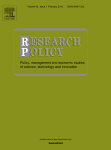
Transputers and transputer-based parallel computers: Sociotechnical constituencies and the build up of British-European capabilities in information technology
In: Research Policy, No. 19, 1990, p. 309-333.
New high-performance chips and parallel computers are foreshadowing momentous changes in the established structure of the computer industry. The change is creating new opportunities for the British and European electronics industries to enhance their standing in both microprocessors and computers. The United Kingdom and Europe hold one particularly strong technical card: the transputer and a range of transputer-based parallel computers which integrate microchip, hardware and software into a coherent set of high-performance products. Technical excellence will not be enough to ensure substantial gains. The issues are complex and require understanding a process in which technical and economic factors interact with individual and institutional actors’ resources, visions and interests in a context of evolving technical, market and political trends. One way of dealing with this complexity is to conceive of technological change and capabilities as being determined by the development of sociotechnical constituencies. These are dynamic ensembles of technical constituents (e.g. machines) and social constituents (e.g. institutions) which interact and shape each other in the course of the creation, production and diffusion of specific technologies such as the transputer. This paper examines transputer technologies in the light of their sociotechnical constituency and concludes that, given an appropriate set of policies, they offer Britain and Europe an opportunity to build up an important presence in the world’s microprocessor and computer industry in the long run.
